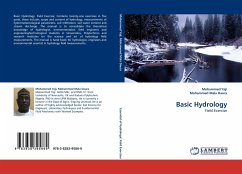The Luenha sub-basin has an area of 54,559.52 km2 and flows into the Zambezi River 40 km downstream from the city of Tete. It is the main tributary on the right bank and the second largest contributor to the Lower Zambezi. This sub-basin rises in the mountains of Nyangui (Zimbabwe), on the Manica plateau at 1,500 m, and the main tributaries are the Mazoé River and the Luaí (a tributary of the Mazoé). The Mazoé River also rises in the Zimbabwean highlands around the city of Harare and has a catchment area of around 34,216 km2.In order to understand the morphimetry and hydrology of the Luenha River sub-basin, the maximum flood flows for different return periods were determined in order to subsidize the sub-basin management plan, micro and macro drainage projects, warning systems, dams and other related projects. To do this, we worked with flood frequency analysis using the different probabilistic distributions that are suitable for estimating maximum flows.








